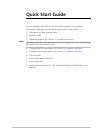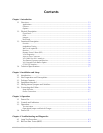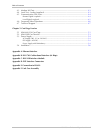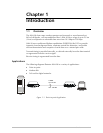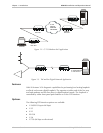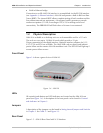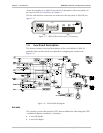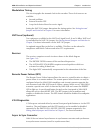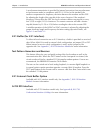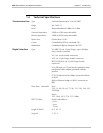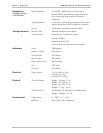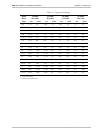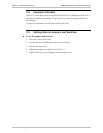
ASM-20 Installation and Operation Manual Chapter 1 Introduction
Functional Description 1-5
Modulation Timing
This circuit supplies the transmit clock to the encoder. Three clock sources are
available:
• Internal oscillator
• External from the DTE
• Loop clock derived from the receive signal.
Setting the XMT CLK jumper determines the timing option. See Setting Internal
Jumpers and Switches in Chapter 2 for more information.
XMT Level (optional)
Two options are available for the XMT level (signal level): 0 and -6 dBm. XMT level
is controlled by the XMT LVL jumper. See Setting Internal Jumpers and Switches in
Chapter 2 for more information on the XMT LVL jumper.
An optional output filter to the line is available. This filter can be ordered in
compliance with British Telecom and other PTT requirements.
Receiver
The receiver comprises several circuits as shown in the block diagram
(see Figure 1-6):
• The RECEIVE FILTER removes all the out-band frequencies.
• The AUTOMATIC EQUALIZER comprises several equalizers which are
activated according to baud rate.
• The digital AGC automatically compensates for the attenuation of the line.
Remote Power Failure (RPF)
The Remote Power Failure feature allows the user at a central location to detect a
power failure in a remote modem. The remote power failure feature can only be
configured when the ASM-20/SA standalone unit (remote) operates opposite the
rack-mounted card ASM-20/R (central). When a power failure occurs, ASM-20/SA
transmits a special tone which is detected by ASM-20/R and causes the ERR/RPF
LED to light up. A special push button located on the front panel of ASM-20/R
allows the user to reset the RPF LED. The RPF jumper in the standalone unit
enables or disables the feature. The RPF feature should be disabled for multipoint
applications.
V.54 Diagnostics
V.54 loops are activated either by manual front panel push buttons or via the DTE
interface. The push buttons and the DTE interface can be enabled or disabled
separately by the SWITCH EN, ALB DTE, RLB DTE jumpers respectively. See
Setting Internal Jumpers and Switches in Chapter 2, for more information.
Async to Sync Converter
ASM-20 has an internal asynchronous to synchronous converter and synchronous
to asynchronous converter (used for asynchronous data).



